Which two statements correctly describe RSTP port roles? (Choose two.)
What are two characteristics of RSTP alternate ports? (Choose two.)
After receiving a BGP route, which two conditions are verified by the receiving router to ensure that the received route is valid? (Choose two)
Which statement is correct about the IS-IS ISO NET address?
Exhibit
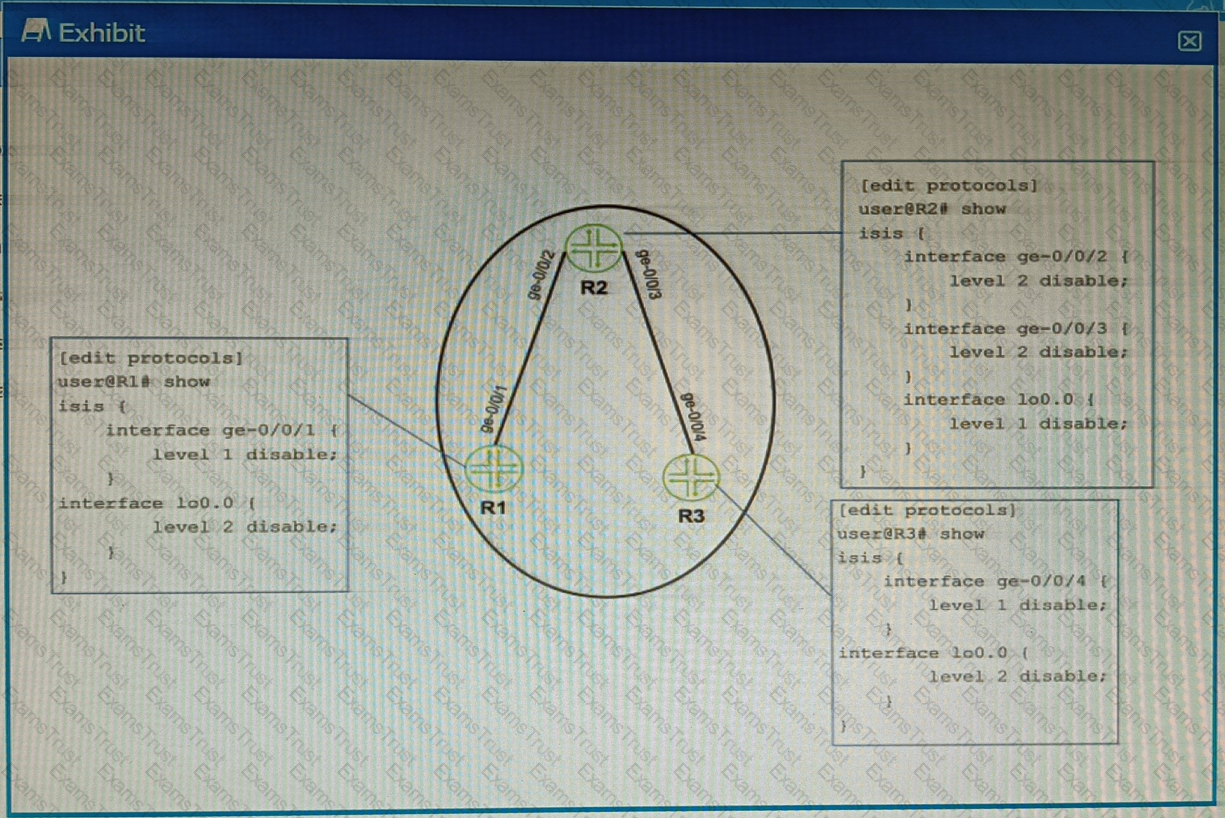
Referring to the exhibit, which two configuration changes must you apply for packets to reach from R1 to R3 using IS-IS? (Choose two.)
You are troubleshooting a BGP routing issue between your network and a customer router and are reviewing the BGP routing policies. Which two statements are correct in this scenario? (Choose two.)
Which statement about aggregate routes is correct?
Which two statements about BGP facilitate the prevention of routing loops between two autonomous systems? (Choose two.)
Which two statements are correct about using firewall filters on EX Series switches? (Choose two.)
Exhibit
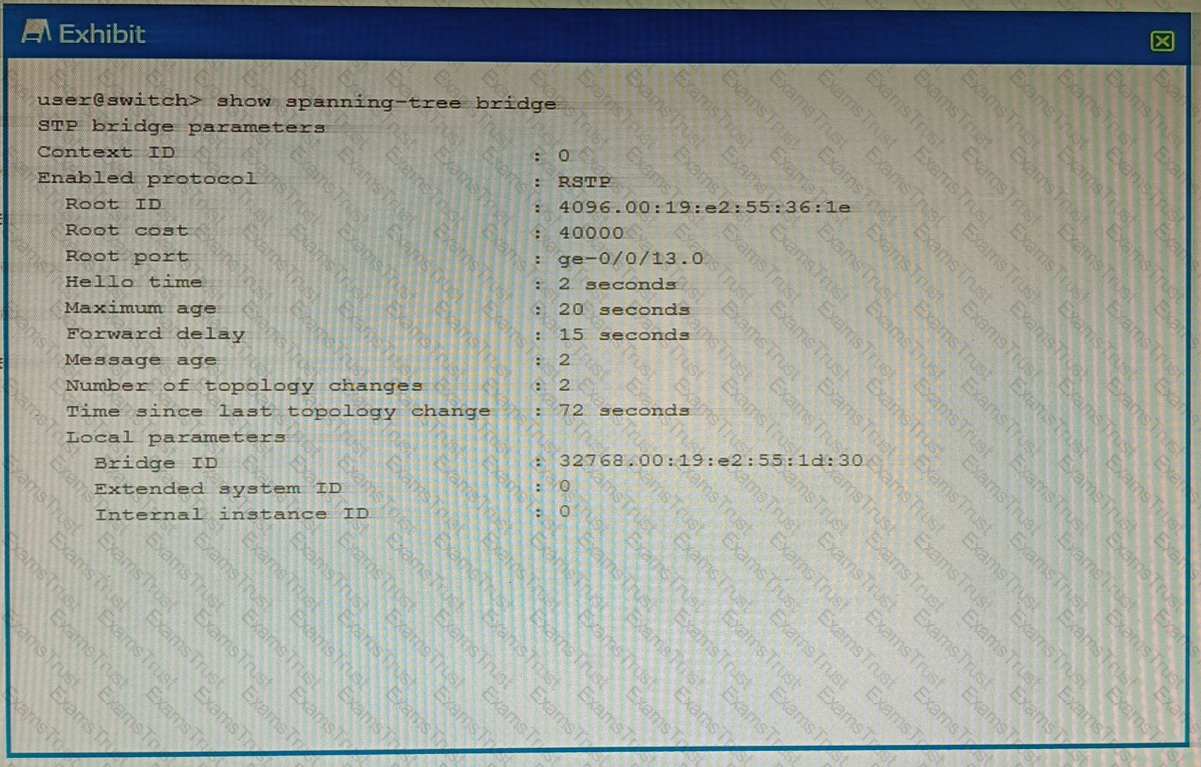
Referring to the exhibit, which statement is correct?
Exhibit.
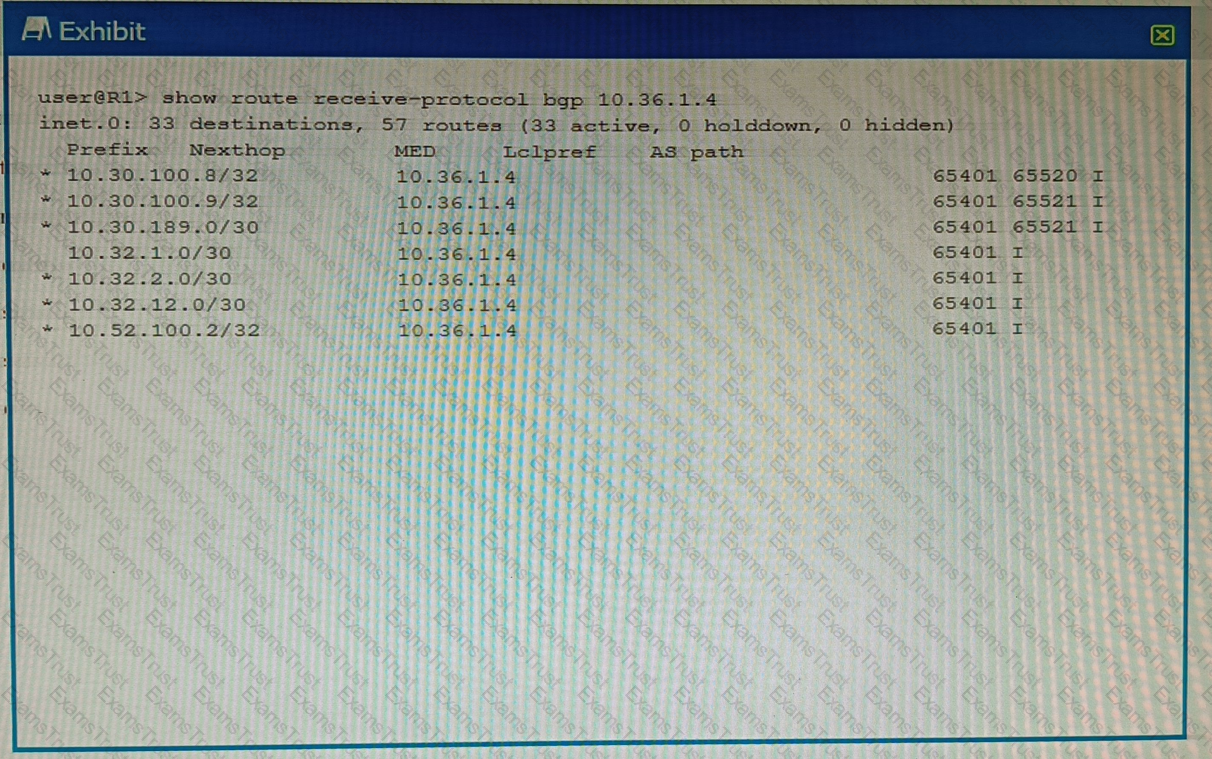
You want to verify prefix information being sent from 10.36.1.4.
Which two statements are correct about the output shown in the exhibit? (Choose two.)
Exhibit.
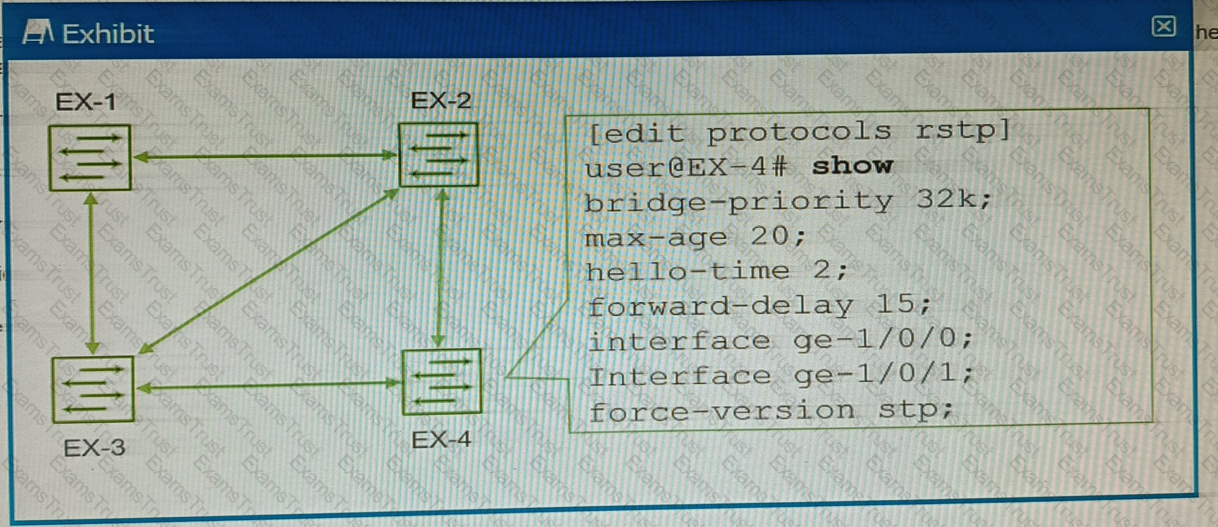
You have configured the four EX Series switches with RSTP, as shown in the exhibit. You discover that whenever a link between switches goes up or down, the switches take longer than expected for RSTP to converge, using the default settings.
In this scenario, which action would solve the delay in RSTP convergence?
You have DHCP snooping enabled but no entries are automatically created in the snooping database for an interface on your EX Series switch. What are two reasons for the problem? (Choose two.)
Which two types of tunnels are able to be created on all Junos devices? (Choose two.)
What is the default MAC age-out timer on an EX Series switch?
Which two mechanisms are part of building and maintaining a Layer 2 bridge table? (Choose two.)
Exhibit
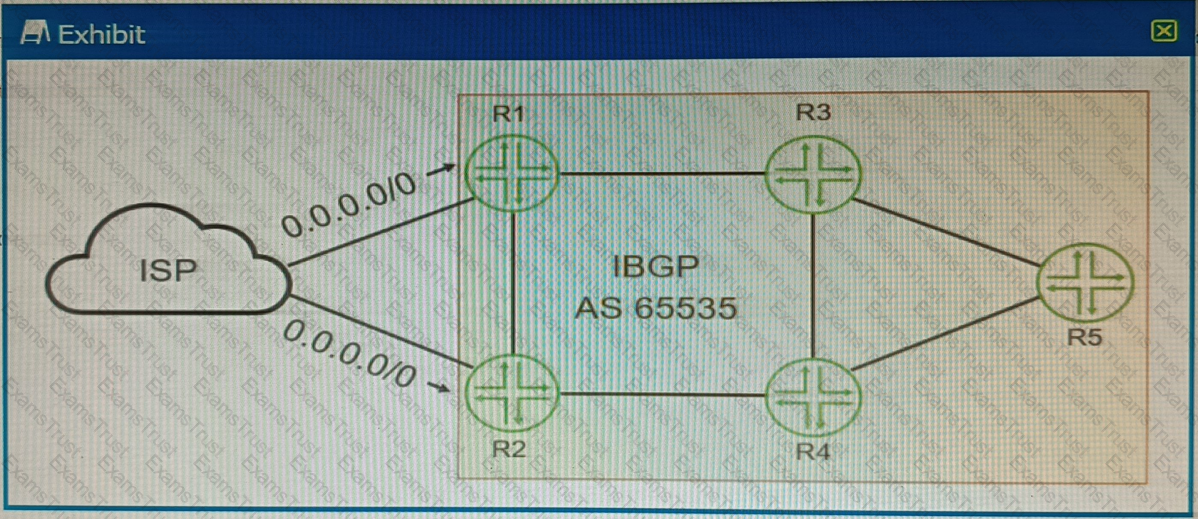
Your ISP is announcing a default route to both R1 and R2. You want your network routers to forward all Internet traffic through the R1 device
Which BGP attribute would you use?
Two routers share the same highest priority and start time.
You want to ensure traffic is routed through a GRE tunnel.
In this scenario, which two statements will satisfy this requirement? (Choose two.)